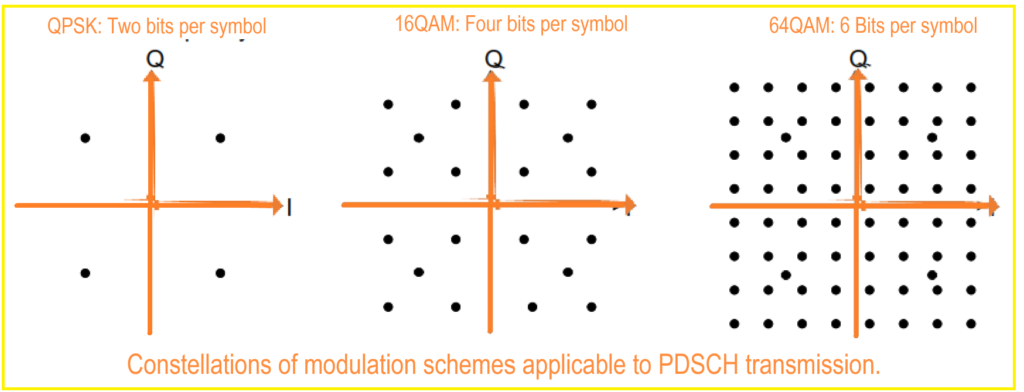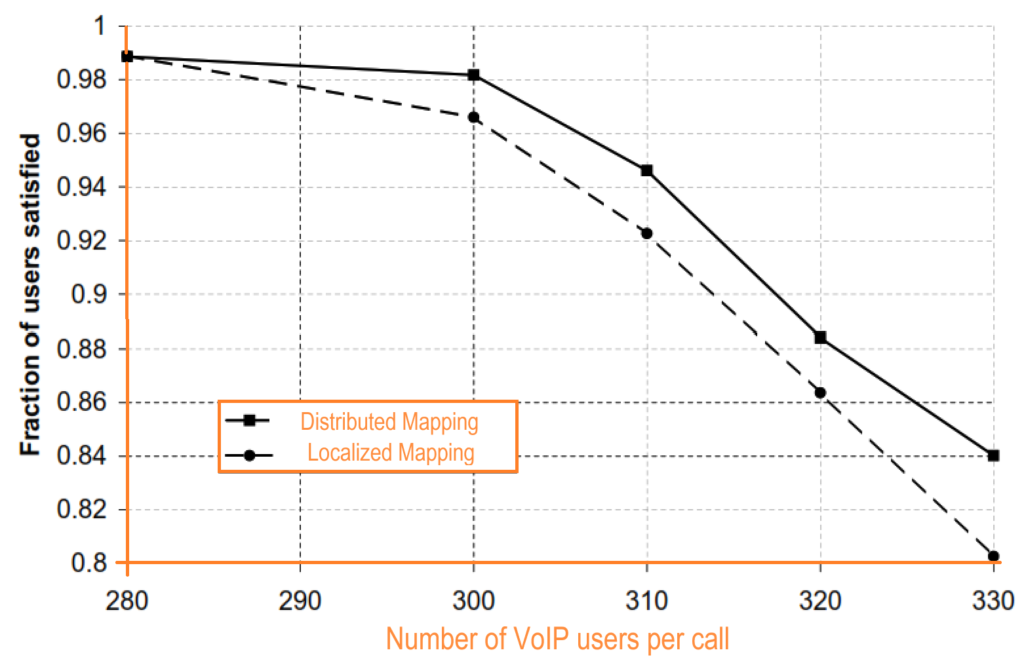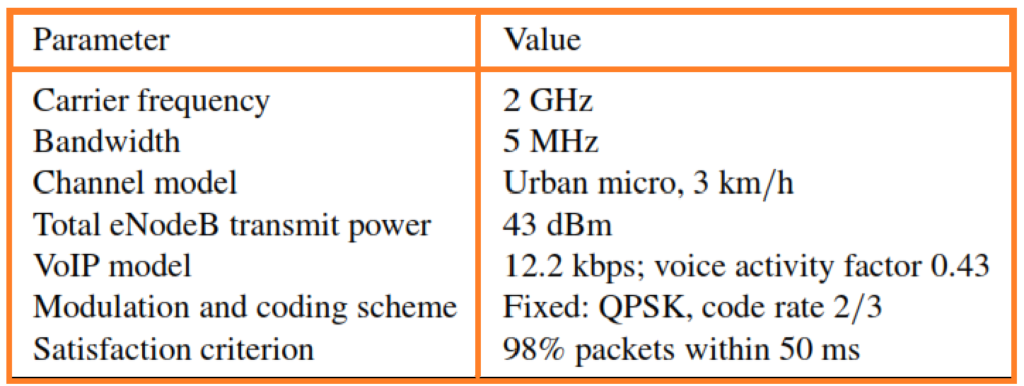The Physical Downlink Shared Channel (PDSCH) is the main data-bearing downlink channel in LTE, handling all user data, broadcast system information not carried on the Physical Broadcast Channel (PBCH), and paging messages. There is no specific physical layer paging channel in LTE, making the PDSCH critical for a variety of transmissions.
Data on the PDSCH is transmitted in units known as transport blocks, which correspond to MAC-layer Protocol Data Units (PDUs). These transport blocks may be passed down from the MAC layer to the physical layer once per Transmission Time Interval (TTI), where each TTI is 1 millisecond, equivalent to the subframe duration.
What is the Use of the PDSCH?
For user data transmission, one or at most two transport blocks can be transmitted per UE per subframe, depending on the selected transmission mode. The transmission mode configures the multi-antenna technique applied to the PDSCH for each UE. The transmission modes include:
- Transmission Mode 1: Transmission from a single eNodeB antenna port.
- Transmission Mode 2: Transmit diversity.
- Transmission Mode 3: Open-loop spatial multiplexing.
- Transmission Mode 4: Closed-loop spatial multiplexing.
- Transmission Mode 5: Multi-user Multiple-Input Multiple-Output (MIMO).
- Transmission Mode 6: Closed-loop rank-1 precoding.
- Transmission Mode 7: Transmission using UE-specific reference signals.
Except for transmission mode 7, the phase reference for demodulating the PDSCH is provided by cell-specific Reference Signals (RSs). The number of eNodeB antenna ports used for the PDSCH matches the number used for the PBCH in the cell. In transmission mode 7, UE-specific RSs provide the phase reference. The configured transmission mode also influences the transmission of associated downlink control signaling and the channel quality feedback from the UE.
Post-channel coding and mapping to spatial layers according to the selected transmission mode, coded data bits are mapped to modulation symbols based on the modulation scheme selected for the current radio channel conditions and required data rate.
The modulation order varies from two bits per symbol (using QPSK) to six bits per symbol (using 64QAM). Support for 64QAM modulation is mandatory for all LTE UE classes to achieve the high peak downlink data rates required for LTE. The modulation schemes are illustrated through their constellation diagrams.

The PDSCH uses resource elements not reserved for other purposes (e.g., reference signals, synchronization signals, PBCH, and control signaling). When control signaling informs a UE about resource block allocation in a subframe, it is the available resource elements within those resource blocks that carry PDSCH data. Typically, dynamic control signaling transmitted at the start of the relevant subframe using the Physical Downlink Control Channel (PDCCH) signals the allocation of resource blocks for PDSCH transmission to a particular UE.
Mapping of Data to Physical Resource Blocks.
Data mapping to physical resource blocks can be localized or distributed. Localized resource mapping allocates all available resource elements in a pair of resource blocks to the same UE, suitable for dynamic channel-dependent scheduling based on frequency-specific channel quality information from the UE.
Distributed Resource Mapping.
Distributed resource mapping separates the two physical resource blocks comprising each pair in frequency, obtaining frequency diversity for small data amounts that would otherwise be constrained to a narrow part of the downlink bandwidth and more susceptible to narrow-band fading. This mapping mode is beneficial for services like VoIP, where small data amounts are persistently scheduled to minimize overhead.

Distributed mapping involves a frequency hop at the slot boundary in the middle of the subframe, transmitting a block of data for a given UE on different sets of 12 subcarriers in each half of the subframe.
An example simulation illustrates the potential increase in VoIP users accommodated in a cell using distributed resource mapping compared to localized resource mapping, demonstrating the efficiency and flexibility of the PDSCH in handling diverse data transmission needs in LTE.

mapping.
In this example, the main simulation parameters are as given in Table below.

Special Uses of the PDSCH.
In LTE, the Physical Downlink Shared Channel (PDSCH) serves additional special purposes beyond the transmission of normal user data. Two notable special uses are for broadcast system information and for paging messages.
Broadcast System Information (Dynamic BCH)
The PDSCH carries broadcast system information, including System Information Blocks (SIBs), which are not transmitted on the Physical Broadcast Channel (PBCH). This type of broadcast information is often referred to as the ‘Dynamic BCH’. The resources allocated for this broadcast data are signaled by messages on the Physical Downlink Control Channel (PDCCH).
Unlike typical PDSCH data signaling, where the PDCCH indicates the identity of a specific UE, the signaling for broadcast data uses a designated broadcast identity known as the System Information Radio Network Temporary Identifier (SI-RNTI). The SI-RNTI is fixed in the LTE specifications and is known to all UEs beforehand.
Certain constraints apply to which subframes can be used for particular system information messages on the PDSCH. These constraints ensure that UEs can reliably and efficiently receive the necessary broadcast information.
Paging Messages
The PDSCH is also used for paging, as LTE does not have a separate physical channel dedicated to this function. In earlier systems such as WCDMA, a specific Paging Indicator Channel was used to minimize the impact on UE battery life by allowing the UE to periodically wake up its receiver for a short time to check for paging indicators. If a paging indicator was detected, the UE would then stay active to receive a longer paging message identifying the specific UE being paged.
In LTE, the PDCCH signaling is already brief, so the impact on UE battery life from monitoring the PDCCH periodically is minimal. Thus, the PDCCH carries the equivalent of a paging indicator, with detailed paging information being transmitted on the PDSCH in the resource block indicated by the PDCCH.
Paging indicators on the PDCCH use a single fixed identifier known as the Paging RNTI (P-RNTI). Instead of different paging identifiers for different UE groups, different UEs are scheduled to monitor different subframes for their paging messages. This method effectively manages paging in LTE while minimizing power consumption.